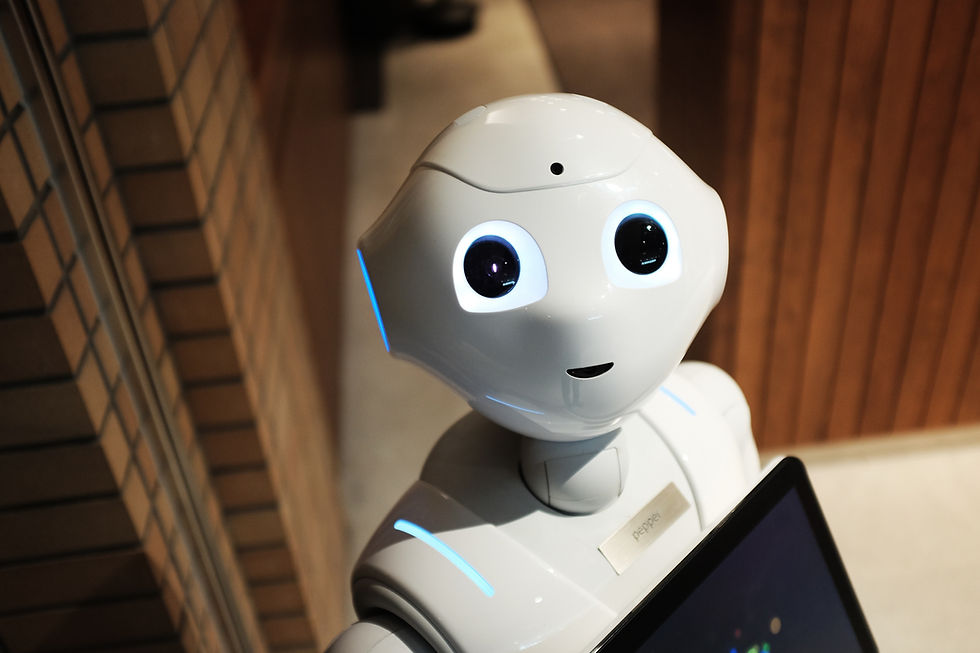The Silent Shift: How AI Is Reshaping Jobs Faster Than We Realize
- 11323423canadainc
- Mar 27
- 3 min read
A year ago, the world was already buzzing about artificial intelligence. Fast forward to today, and we’re not just talking about the future of work—we’re living through its rapid redefinition. AI isn’t coming. It’s here. And while the U.S. unemployment rate sits at a seemingly steady 4.1%, it’s masking a silent shift in the workforce that we’d be foolish to ignore.

Estimates suggest that AI has fully replaced about 5–7% of jobs that existed just a year ago. From customer service agents replaced by chatbots, to content creators edged out by generative tools, to paralegals and junior developers watching parts of their tasks vanish overnight—this wave is already breaking. But when we include partial replacement—where AI handles some tasks in a role—we're talking 30–40% of jobs being affected.
So, where did all those people go? Why doesn’t the unemployment rate reflect a bigger crisis?
The answer lies in how we measure employment. Many displaced workers didn’t disappear—they shifted into gig work, part-time jobs, or roles far below their skill level. They're still technically “employed,” but they’re underemployed, stretched thin, and increasingly vulnerable. Others have migrated to sectors still starved for labor—like logistics, construction, or elder care—while new roles tied to AI, like prompt engineering or data labeling, are filling in some gaps.
Meanwhile, many companies are in a transition phase. They’ve adopted AI, but haven’t yet made sweeping layoffs—perhaps out of caution, contracts, or inertia. But as the tech gets smarter and more reliable, and as executives feel pressure to increase margins, more roles will be on the chopping block.
Here's the catch: companies are optimizing for short-term profits by reducing labor costs, but if every company does that, it leads to a dangerous paradox. Fewer employed people means less consumer spending. That means even the most “efficient” businesses may eventually struggle—because who’s left to buy their products? In chasing cost-cutting, companies could be undermining the entire economy they depend on.
Historically, we’ve weathered waves of disruption before—like the automation of manufacturing. But those changes came slowly, giving society time to adapt. New industries emerged. People retrained. Education systems evolved. AI, on the other hand, is developing at an exponential pace, disrupting every sector, and touching even high-skilled and creative jobs we thought were “safe.”
To manage this, some advocate for solutions like Universal Basic Income or a "robot tax"—wealth redistribution mechanisms that ensure people still have purchasing power, even if they’re no longer working in the traditional sense. But here’s the problem: if redistribution is routed solely through governments, we face another risk—inefficiency, mismanagement, and political friction. History tells us that once public money enters the machinery of government, much of it doesn’t come back out cleanly or effectively.
We may need a new model altogether. One that blends decentralized systems, transparency, and accountability—possibly even leveraging blockchain or public co-ops—to keep AI’s productivity gains benefiting the broader public, not just shareholders. Because if we don’t evolve the economic system alongside the technology, we’ll face mass inequality, unrest, and a society where millions of people are left behind.
There’s still time to get this right—but not much. The ground beneath us is shifting. The stats may look stable, but the future of work is already unrecognizable. The question is: will we be bold enough to rebuild the system before it breaks?



